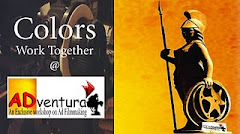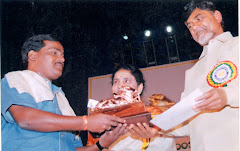Screenwriting formats
Screenplays and teleplays have set of standardizations in place, beginning with proper formatting. These rules are in part to serve the practical purpose of making scripts uniformly readable "blueprints" of movies, and also to serve as a way of distinguishing a professional from an amateur.
Feature film
Motion picture screenplays intended for submission to mainstream studios, whether in the US or elsewhere in the world, are expected to conform to a standard typographical style known widely as studio format which stipulates how elements of the screenplay such as scene headings, action, transitions, dialog, character names, shots and parenthetical matter should be presented on the page, as well as the font size and line spacing.
One reason for this is that, when rendered in studio format, most screenplays will transfer onto the screen at the rate of approximately one page per minute. This rule of thumb is widely contested — a page of dialog usually occupies less screen time than a page of action, for example, and it depends enormously on the literary style of the writer — and yet it continues to hold sway in modern Bollywood and Hollywood.
There is no single standard for studio format. Some studios have definitions of the required format written into the rubric of their writer's contract. The Nicholl Fellowship, a screenwriting competition run under the auspices of the Academy of Motion Picture Arts and Sciences, has a useful and accurate guide to screenplay format. A more detailed reference is The Complete Guide to Standard Script Formats.
Traditionally, a screenplay should be 90-110 pages long. Comedies and children's films tend to weigh in at the lower end.
Screenplays are almost always written using a monospaced font, often a variant of Courier.
Television
For American TV shows, the format rules for hour-long dramas, like CSI, and single-camera sitcoms, like Scrubs, are essentially the same as for motion pictures. The main difference is that TV scripts have act breaks. Multi-camera sitcoms, like Two and a Half Men, use a different, specialized format that derives from radio and the stage play. In this format, dialogue is double-spaced, action lines are capitalized, and scene headings are capitalized and underlined.
Documentaries
The script format for documentaries and audio-visual presentations which consist largely of voice-over matched to still or moving pictures is different again and uses a two-column format which can be particularly difficult to achieve in standard word processors, at least when it comes to editing. Many script-editing software programs include templates for documentary formats.
Physical format
American screenplays are printed single-sided on three-hole-punched letter sized (8.5 x 11 inch) paper, and held together with two brass brads in the top and bottom hole. The middle hole is left empty. In the UK, double-hole-punched A4 paper is often used, although some UK writers use the US letter paper format, especially when their scripts are to be read by American producers, since otherwise the pages may be cropped when printed on US paper. Despite the use of double-punched paper, it is common to see scripts in the UK held together by a single brad punched in the top left hand corner. This makes it easy to flip from page to page during script meetings and may have something to do with the taller page of A4.
Screenplays are usually bound with a light card stock cover and back page, often showing the logo of the production company or agency submitting the script.
Increasingly, reading copies of screenplays (that is, those distributed by producers and agencies in the hope of attracting finance or talent) are distributed printed on both sides of the paper (often professionally bound) to cut down on paper waste out of environmental concerns. Occasionally they are reduced to half-size to make a small book which is convenient to read or put in a pocket; this is generally for use by the director or other production crew during shooting.
Although most writing contracts continue to stipulate physical delivery of three or more copies of a finished script, it is common for scripts to be delivered electronically via email. Although most production companies can handle scripts in most formats, it is better practice to supply scripts as a PDF file where possible. This is because it gives the writer final control over the layout of the script, which may otherwise vary depending on what fonts and/or paper size the recipient uses to print the script out. The formatting software programs listed at the bottom of this article produce industry formatted standard screenplays in PDF.
Dialogue & description
The following is an example from an unproduced screenplay which may give the reader an idea of how a scene without camera angles can be descriptive, and perhaps even poetic, so as to convey the proper time frame (1910) and/or feeling:A BUNCH OF GARDENIAS
makes a sudden burst of BRIGHT RED. A hand removes each petal--one at a time. The petals fall on the ground.
Following the petals--
A part of a woman's SHOE is seen. It is strangely ornate with a shabby heel.
Giggles erupt, and the extravagantly painted face of a very young prostitute appears.
Her hand is at the arm of a man who is older by at least a couple of decades.
Imagery
Imagery can be used in many metaphoric ways. In The Talented Mr. Ripley, the title character talked of wanting to close the door on himself sometime, and then, in the end, he did. Rain is commonly used to express a character feeling depressed, while sunny days promote a feeling of happiness and calm. Use imagery to your advantage to sway the emotions of your audience and to clue them in to what is happening.
Imagery is well defined in City of God. The opening image sequence sets the tone for the entire film. The film opens with the shimmer of a knife's blade on a sharpening stone. A drink is being prepared, The knife's blade shows again, juxtaposed is a shot of a chicken letting loose of its harness on its feet. All symbolising 'The One that got away'. The film is about life in the favelas in Rio - sprinkled with violence and games and ambition.
Character
It is very important to develop your characters, because that is who the viewers will be relating to. Characters, especially major characters, should be original and interesting. A character's true nature is revealed by his or her actions in overcoming obstacles.
Dialogue
Dialogue is very important to the film industry, because there are no written words to explain your characters or the plot; it all has to be explained through dialogue and imagery. If your script has weak dialogue, there is a good chance it will lose a reader's or viewer's interest. Make your dialogue sharp, snappy, and easy to follow.
Plot
While the story is what will be told (narrative); the plot is how the story will be told (narration). This vocabulary is not indisputable, though. Sometimes in literature story and plot are used exactly the other way round. Develop your plot before you begin work, write a treatment or a short outline for a film and follow it, but feel free to branch out in other directions if you feel that it would make your script more interesting.
Srivenkat Bulemoni.
Subscribe to:
Post Comments (Atom)









2 comments:
This is very good information for filmy personnels also up comers.Really it is greatest information.
Kindly give proctical scripting through "FILM SCREENPLAY" Blog.
Post a Comment